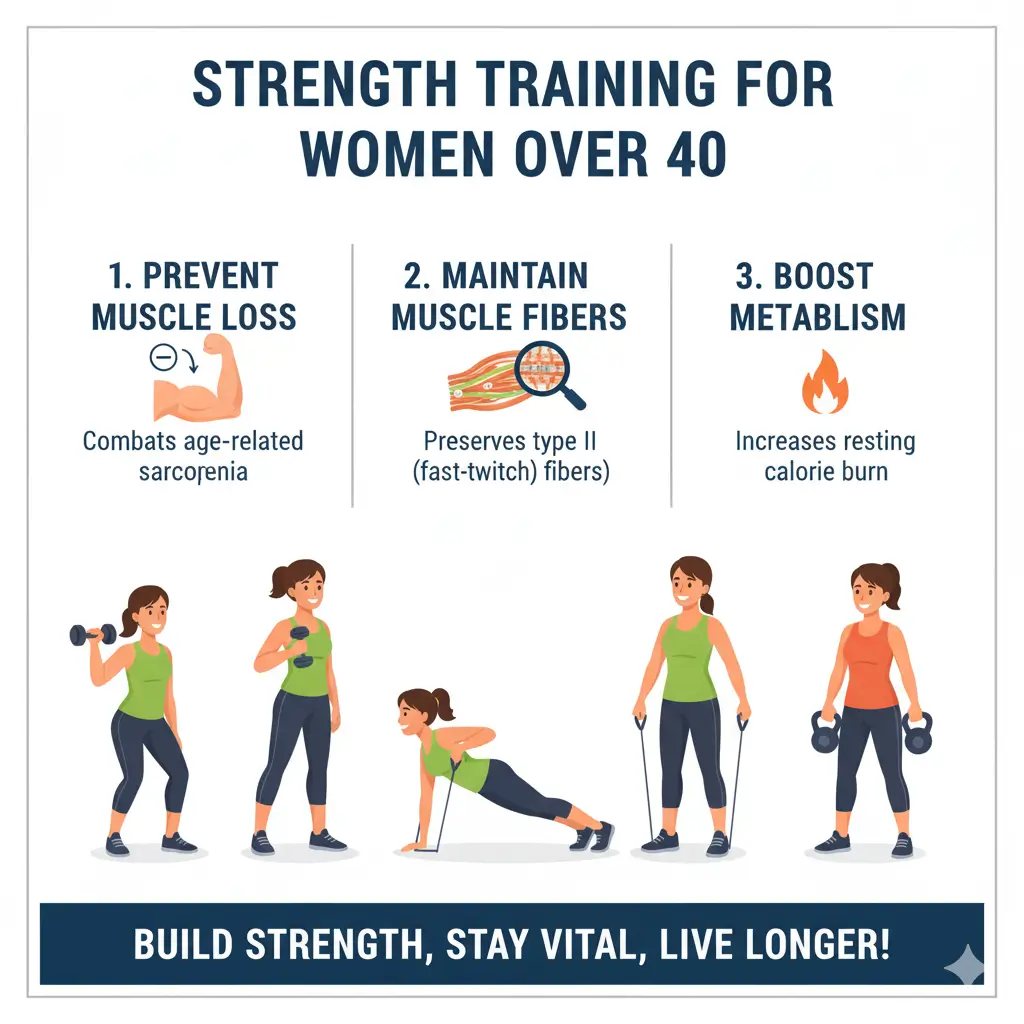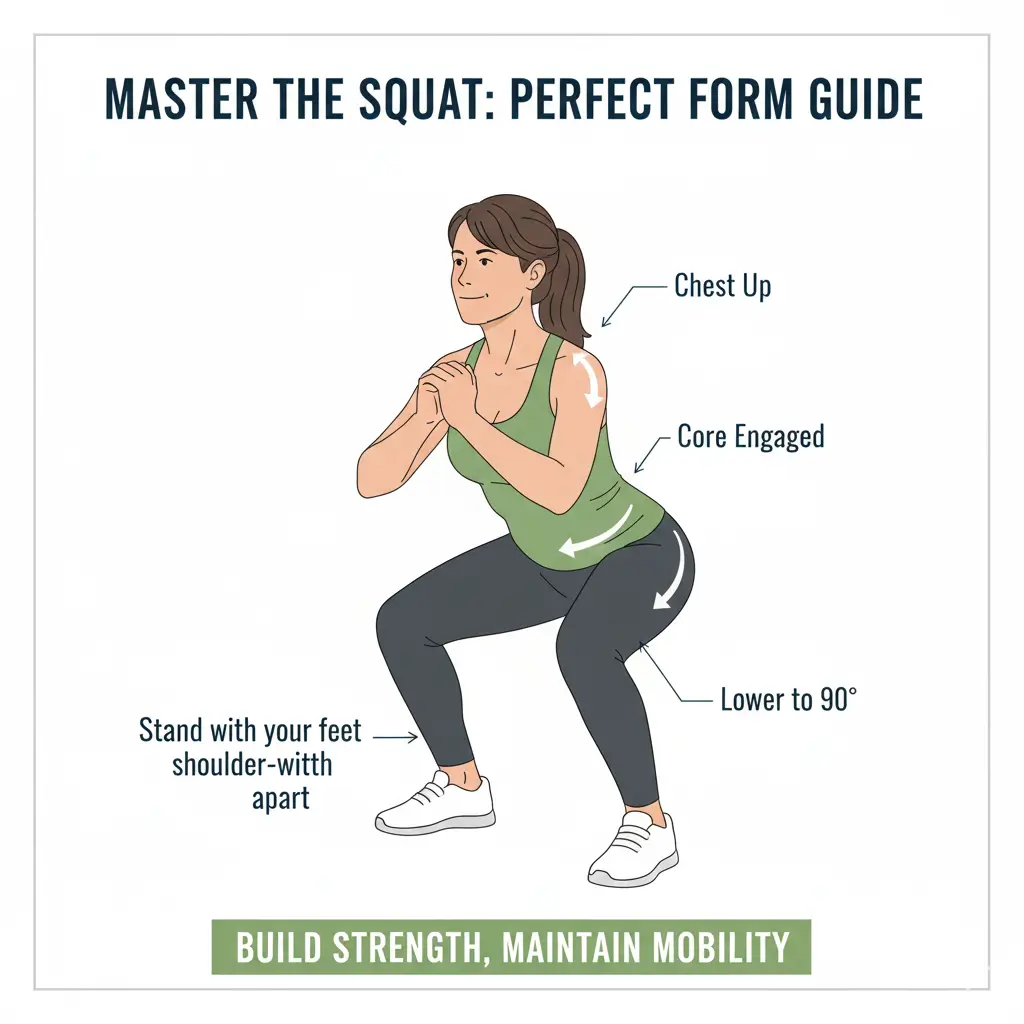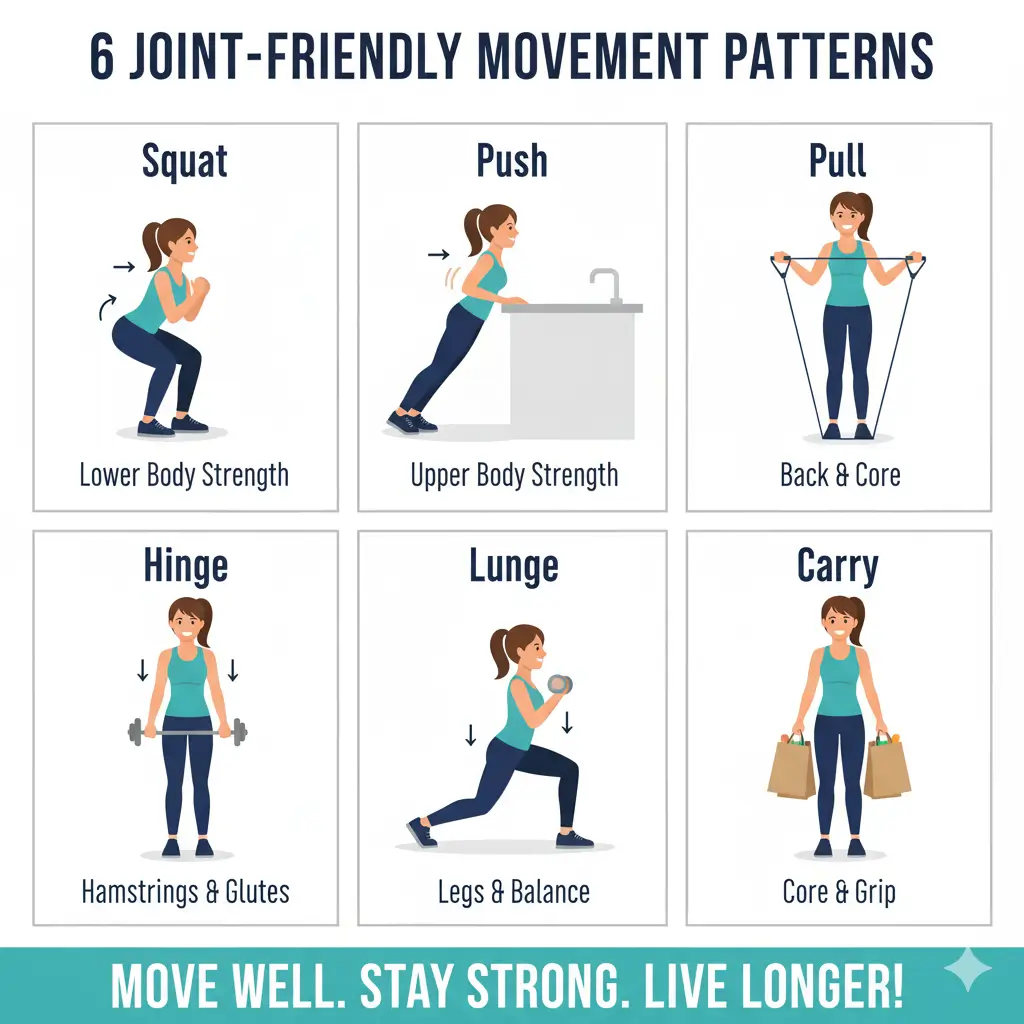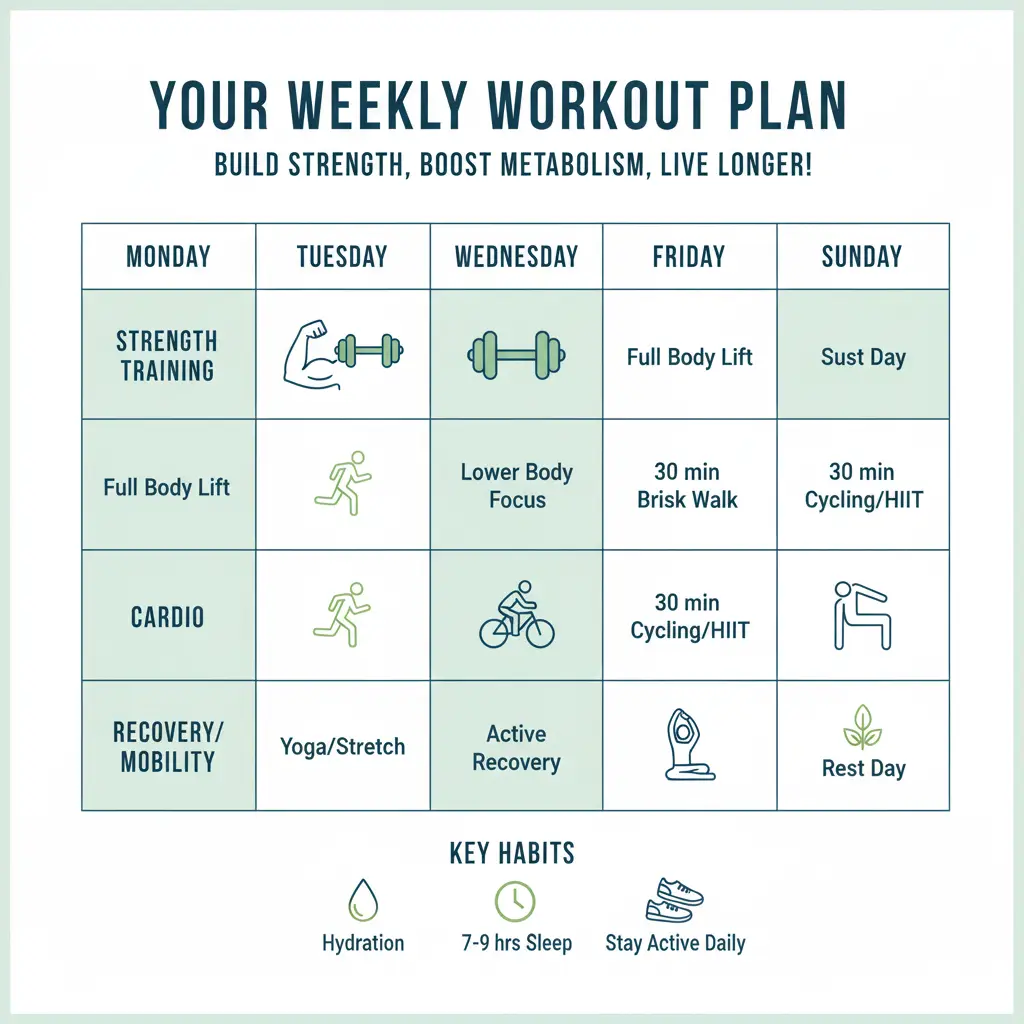
Strength training for women over 40 — also called resistance training or simply lifting weights — is one of the smartest ways to stay strong, healthy, and confident as your body changes. If you’ve noticed stubborn belly fat, slower energy, or that what worked in your 20s and 30s doesn’t work anymore, you’re not alone.
The good news? It’s never too late. Even older adults who’ve never trained before can build strength safely. This guide will show you how.
You’ll learn:
- Why your 40s are a turning point for muscle, hormones, and metabolism.
- How to start with safe strength training exercises and avoid common mistakes.
- Sample programs (2-day, 3-day, and 4-week printable plan).
- Nutrition and recovery strategies, including aerobic exercises such as brisk walking, to support your training.
- FAQs women over 40 ask every day.
Why Strength Training Matters After 40
Hormonal shifts and menopause: why your body changes

When estrogen and progesterone begin to decline, you may notice:
- More belly fat, even if the diet hasn’t changed.
- Slower metabolism — fewer calories burned daily.
- Sleep disruptions (hot flashes, night sweats).
- Higher blood pressure risk as heart health changes.
Strength training helps by:
- Building lean muscle → boosts resting metabolism.
- Improving insulin sensitivity → reduces fat storage.
- Supporting heart health by lowering blood pressure.
- Releasing endorphins → better mood, less stress.
Muscle loss and sarcopenia explained.

Without training, women lose 3–8% of their muscle mass per decade after the age of 30. This loss of muscle mass (sarcopenia) shows up as:
- Weaker strength for daily tasks like carrying groceries.
- Fewer calories burned = easier weight gain.
- Declining muscle fibre activity reduces power and energy.
Why lifting matters:
- Recruits more muscle fibres, keeping strength alive.
- Restores lost muscle, which supports metabolism.
- Improves independence and energy for everyday life.
Bone density, joints, and long-term health

After 40, bone loss speeds up, raising the risk of osteoporosis. Joints may feel stiff or ache more often.
Resistance training helps:
- Strengthens bones with weight-bearing moves (squats, step-ups).
- Protects joints by building the surrounding muscles.
- Improves balance, making falls less likely.
- Makes daily tasks like climbing stairs easier and safer.
How to Get Started Safely

Beginner tips if you’ve never lifted weights
- Start with 2 full-body sessions per week.
- Focus on form before increasing weight.
- Use bodyweight, bands, or weight machines if free weights feel intimidating.
- Leave at least 2 days a week for recovery between sessions.
Even older adults starting for the first time can safely build strength this way.
Choosing weights and reps
- Pick a weight you can handle for 8–12 reps with good form.
- The last 2 reps should feel challenging but not painful.
- As you improve, add weight gradually — that’s progressive overload.
Remember: the right number of reps is more important than the heaviest weight.
Mistakes to avoid in your 40s
- Skipping warm-ups → higher injury risk.
- Training too often without rest.
- Ignoring nutrition, especially protein.
- Copying 20-year-old programs that don’t fit your needs.
Warm-ups and recovery help you avoid injury and stay consistent.
The Core Strength Training Moves
The 6 movement patterns you need

These cover all types of exercise your body needs:
- Squat – legs, hips, and core.
- Hinge – hip hinge or deadlift for glutes and hamstrings.
- Push – push-ups or presses for chest and shoulders.
- Pull – rows or pull-downs for back strength.
- Lunge – single-leg stability and balance.
- Carry – grip, core, and functional strength.
At-home variations (minimal equipment)
- Squat → chair squat: stand with your feet shoulder-width apart, then sit back slowly.
- Hinge → dumbbell Romanian deadlift or banded hip hinge.
- Push → wall push-ups or incline push-ups.
- Pull → backpack rows or band pulls.
- Lunge → step-back lunge with support.
- Carry → walk while holding grocery bags.
Gym variations for progressive overload
- Squat → barbell squat or leg press.
- Hinge → deadlift, kettlebell swing.
- Push → dumbbell bench press, overhead press.
- Pull → cable row, lat pull-down.
- Lunge → walking lunges with dumbbells.
- Carry → farmer’s walk with heavy dumbbells.
Weight machines can be a safe starting point if free weights feel overwhelming.
Sample Routines for Women Over 40

2-day per week beginner plan
Day A
- Squat – 3×10
- Push-up – 3×8
- Band row – 3×12
- Farmer’s carry – 3×30 sec
Day B
- Hip hinge – 3×10
- Overhead press – 3×8
- Step-up – 3×12 per leg
- Side plank – 3×20 sec
3-day at-home plan
- Day 1: Squat, push-up, row.
- Day 2: Deadlift variation, overhead press, lunge.
- Day 3: Circuit (squats, push-ups, carries, planks).
Training 2–3 times a week is ideal for building strength and recovery.
4-week printable plan
- Week 1–2: Focus on form, lighter weights.
- Week 3–4: Add a third day or increase reps.
- Track sets, reps, and progress.
Nutrition & Recovery for Women Over 40

Protein needs
- Aim for 1.2–1.6 g protein per kg body weight daily.
- Spread across meals: eggs, lean meats, beans, yoghurt, fish.
- Protein supports muscle fibre repair after workouts.
Supplements that may help
- Creatine → boosts strength and recovery.
- Calcium + Vitamin D → essential for bone density.
- Omega-3s → reduce inflammation.
- Protein powder → convenient to hit targets.
Sleep, stress, and complementary cardio
- Aim for 7–9 hours of sleep per night.
- Manage stress with walking, yoga, or meditation.
- Pair lifting with light aerobic exercise, such as brisk walking, to support heart health and recovery.

Long-Term Success and Progression
How to progress safely
- Add a small weight increase weekly.
- Increase reps or sets gradually.
- Use deload weeks every 6–8 weeks.
This approach lets you avoid injury while still building strength.
Adjusting for the late 40s and beyond
- 45–50: focus on recovery and protein.
- 50+: prioritise mobility, balance, and joint-friendly training.
- Always listen to your body and adjust volume.
Staying motivated
- Track progress: heavier weights, more reps.
- Celebrate non-scale wins like better sleep or more energy.
- Train with a partner or join a class for accountability.
Strength Training for Women Over 40: Frequently Asked Questions
Most women over 40 see the best results with 2–3 strength training sessions per week. Beginners should start with 2 full-body workouts and progress to 3 sessions once they feel confident. More is not always better—recovery is essential at this age.
The most effective moves are compound strength training exercises like squats, deadlifts, rows, and push-ups. These exercises work multiple muscles at once, burn more calories, and improve daily function. Pair them with brisk walking or light aerobic exercise for best results.
Start simple with 4–5 basic moves: squat, push-up, row, hip hinge, and plank. Perform 2 sets of 8–12 reps each, twice a week. Focus on form first—stand with your feet shoulder-width apart when squatting, for example. Add resistance bands or dumbbells as you get stronger.
Yes, but “heavy” is relative. Choose a weight you can lift for 8–12 reps with good form—the last 2 reps should feel challenging but safe. Heavy doesn’t mean unsafe; it means challenging enough to stimulate muscle growth without risking injury.
Begin with 2 times a week and progress to 3 as you adapt. Advanced lifters may train 4 times weekly by splitting upper and lower body sessions. Always balance training with recovery days to prevent overtraining.
You shouldn’t train the same muscle group daily. Muscles need 24–48 hours to recover. Instead, alternate between strength training, brisk walking, and mobility work. Example week: Mon–Strength, Tue–Walk, Wed–Strength, Thu–Yoga, Fri–Strength, Sat–Active recovery, Sun–Rest.
Conclusion + Next Steps
Strength training after 40 isn’t about chasing perfection. It’s about:
- Protecting your bones and muscles.
- Supporting metabolism and lowering blood pressure.
- Feeling stronger, more confident, and more capable every day.
Start small:
- Pick 2 days this week.
- Do 4–5 basic moves (squat, push, pull, lunge, hinge).
- Track your reps and notice how quickly you build strength.
Download the 4-week printable plan, grab a pair of dumbbells or start with bodyweight, and take your first step today. Your 40s can be your strongest years yet.
Looking for more ideas to stay active? Explore our full guide on exercise and fitness for women over 40 to discover routines, tips, and motivation to keep moving consistently.